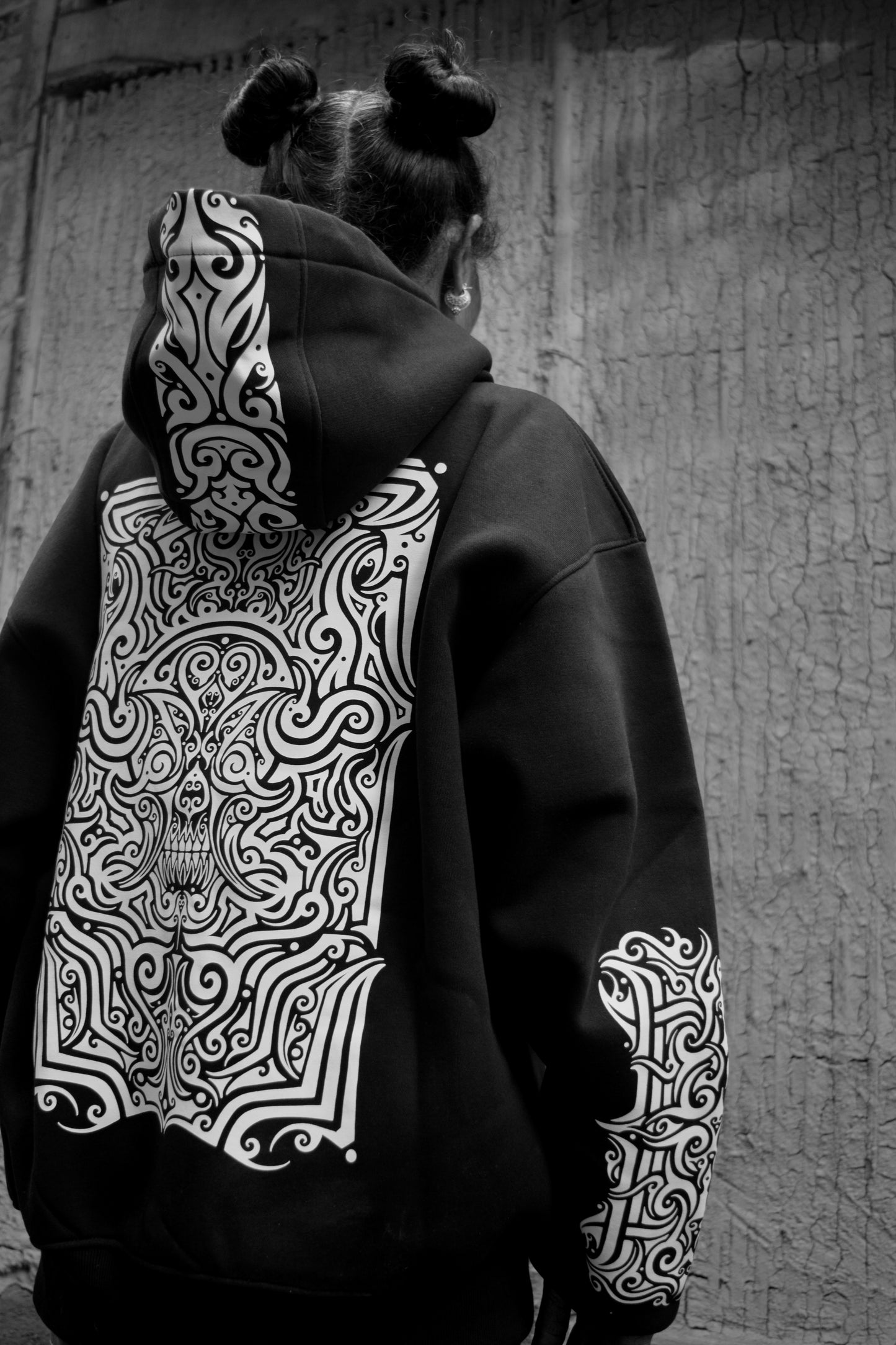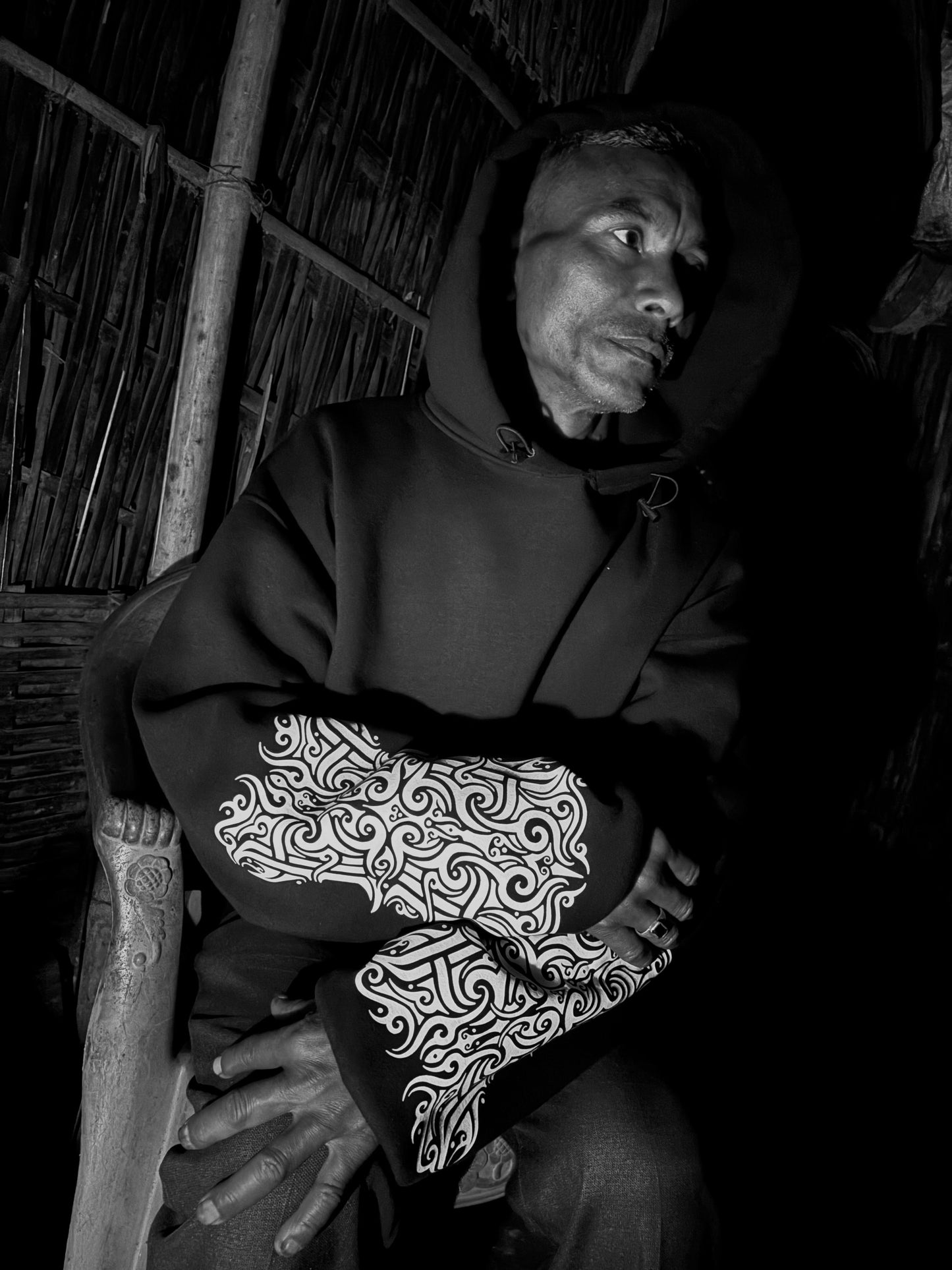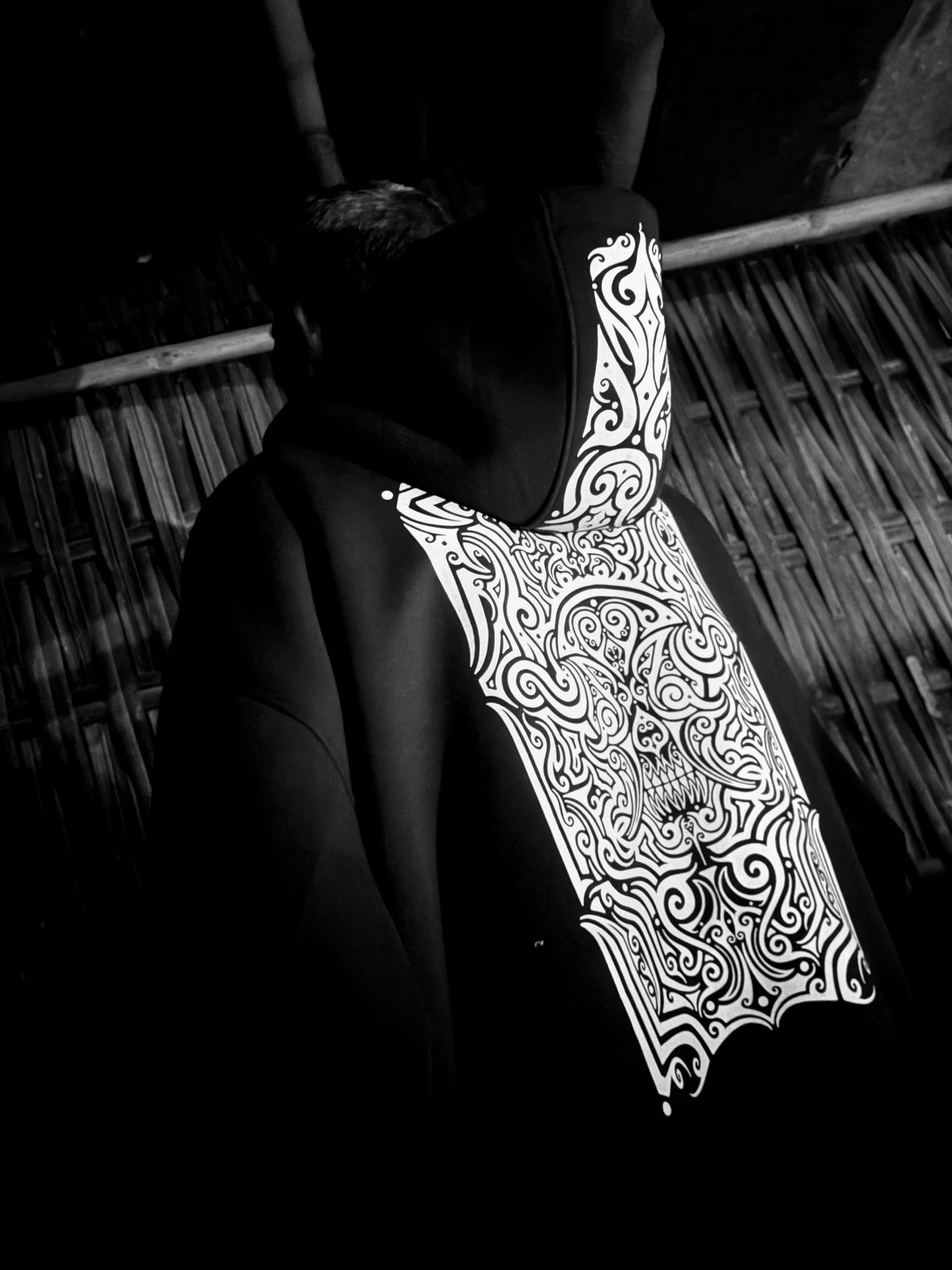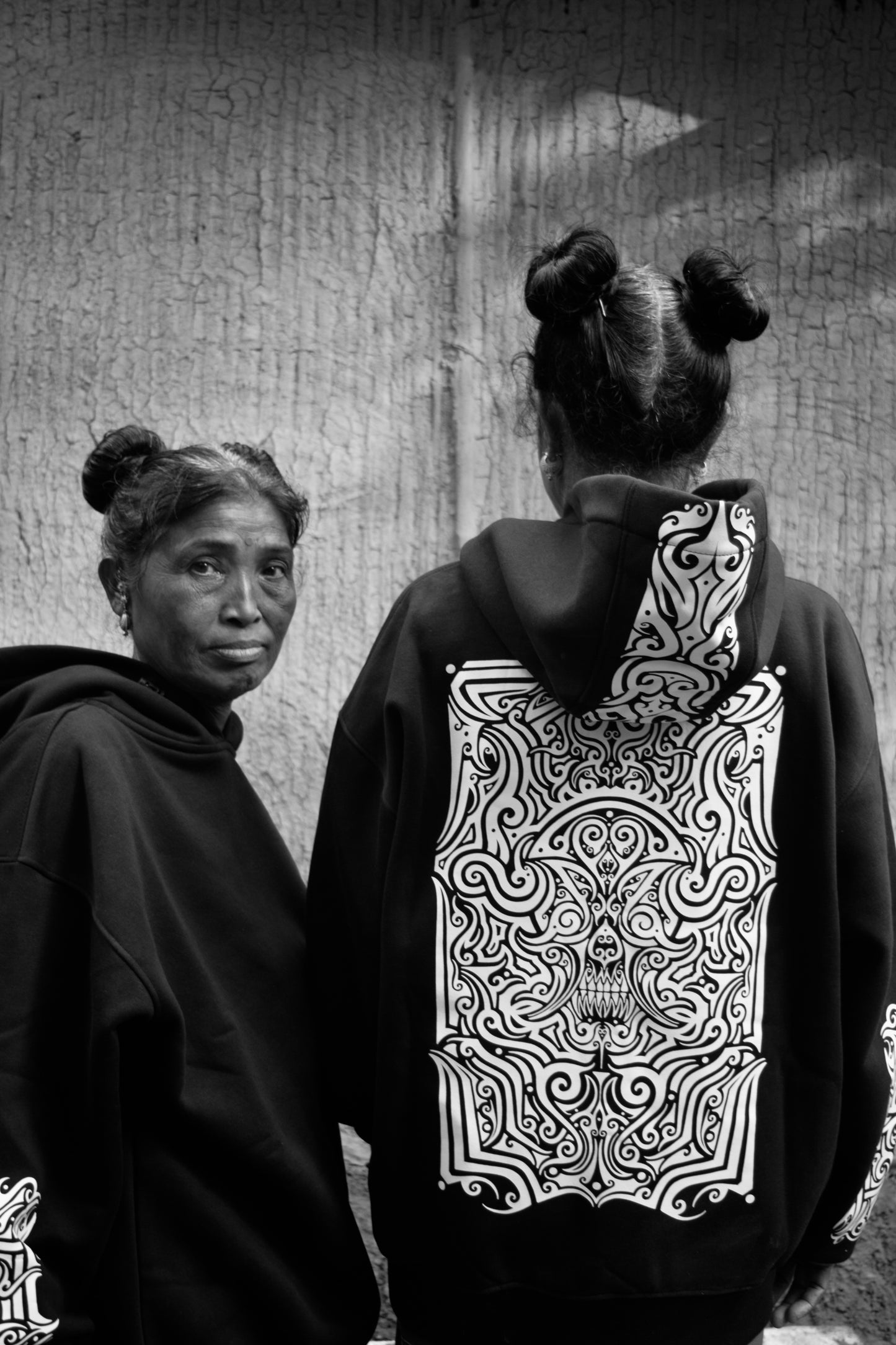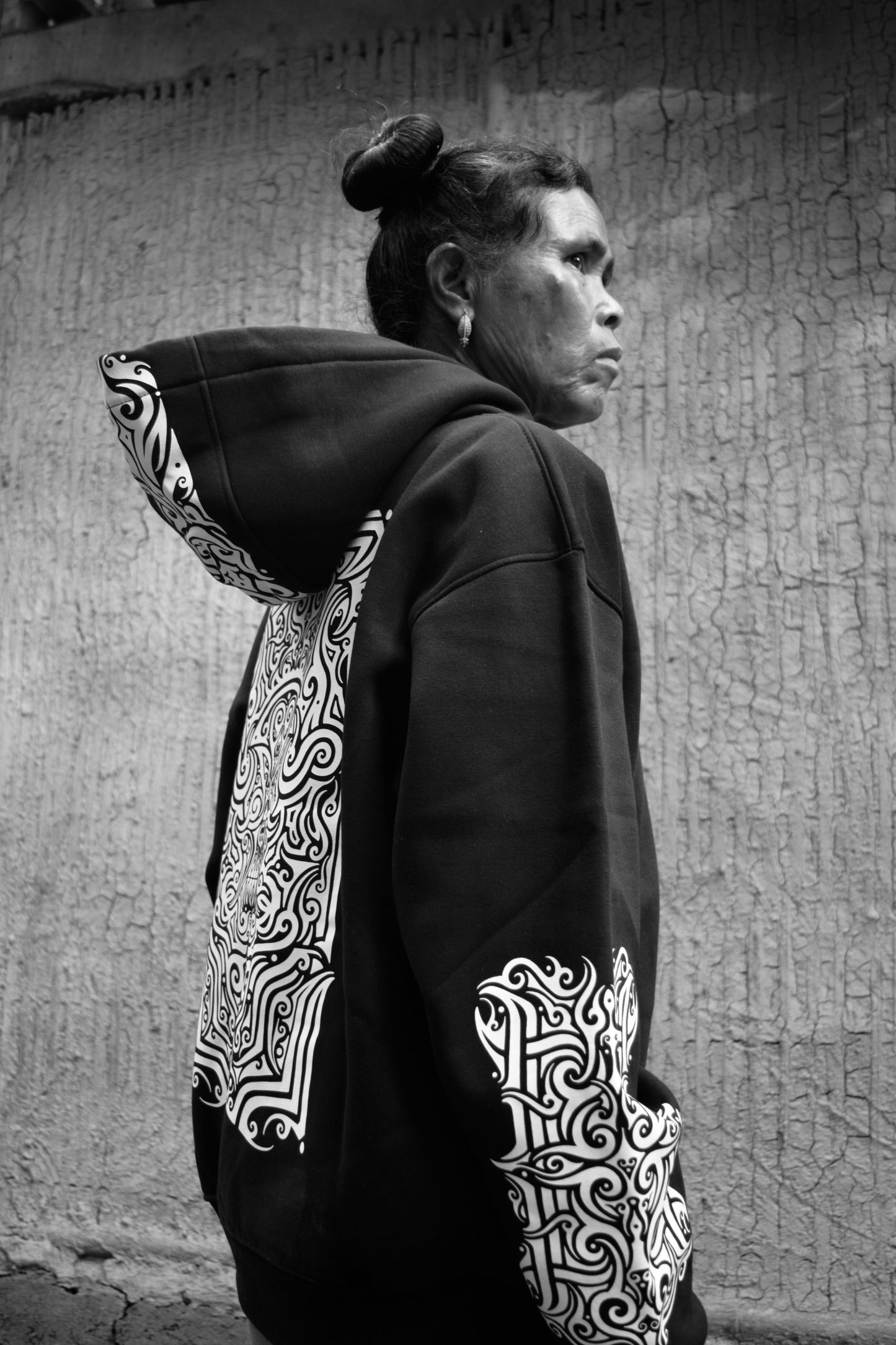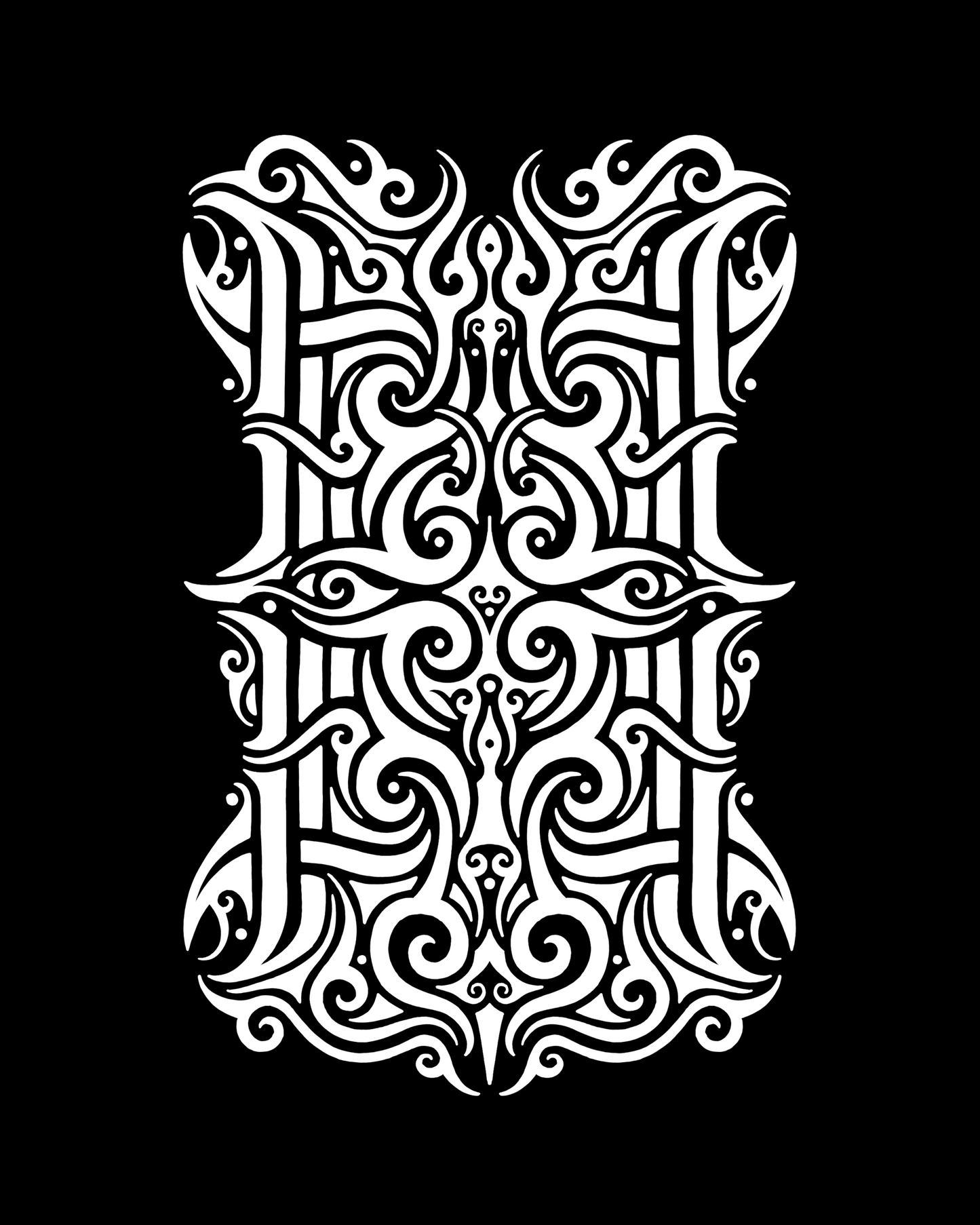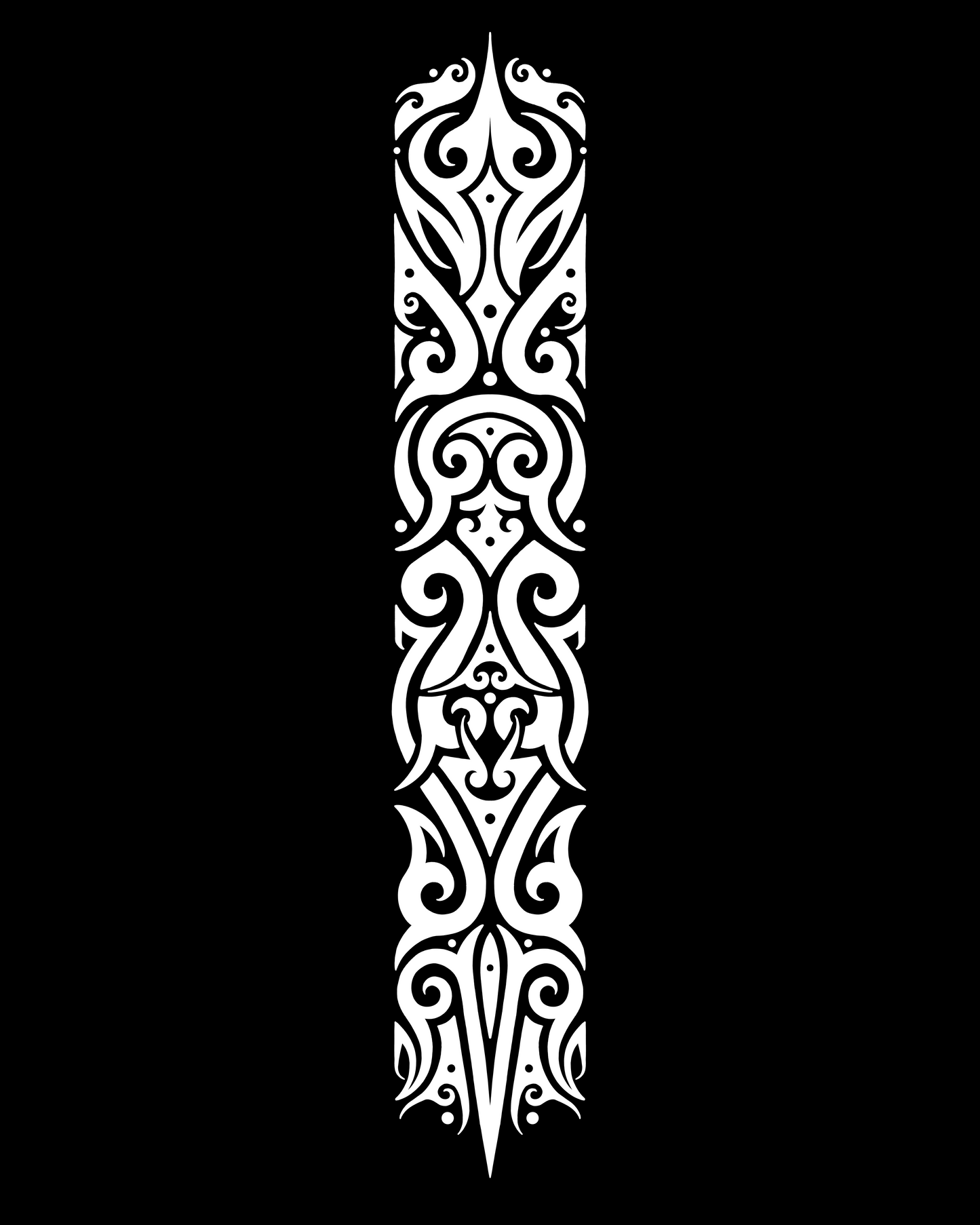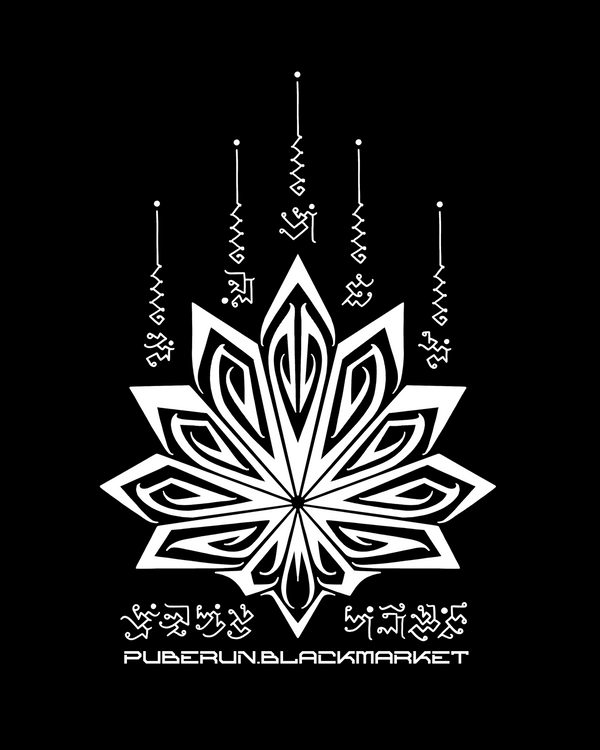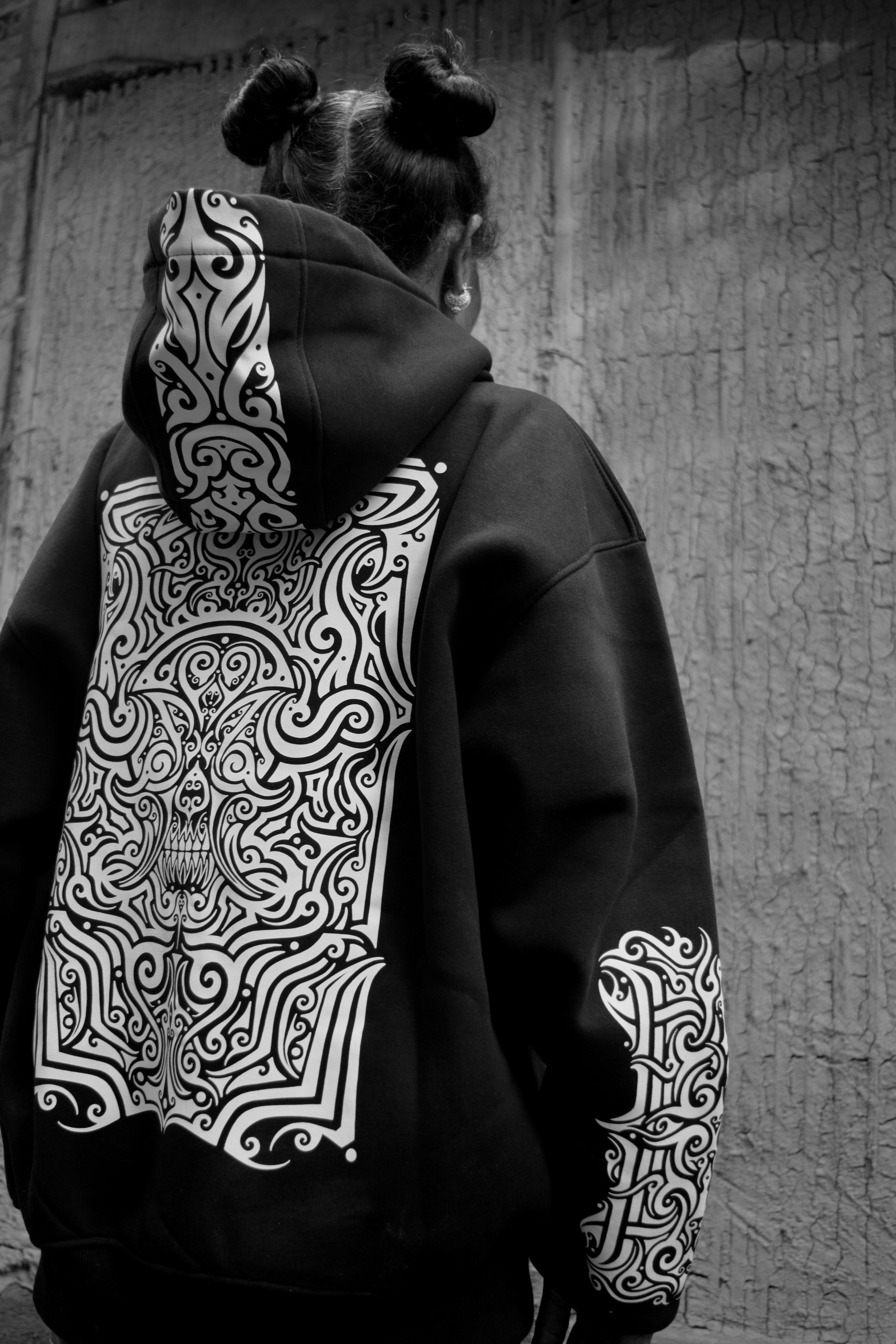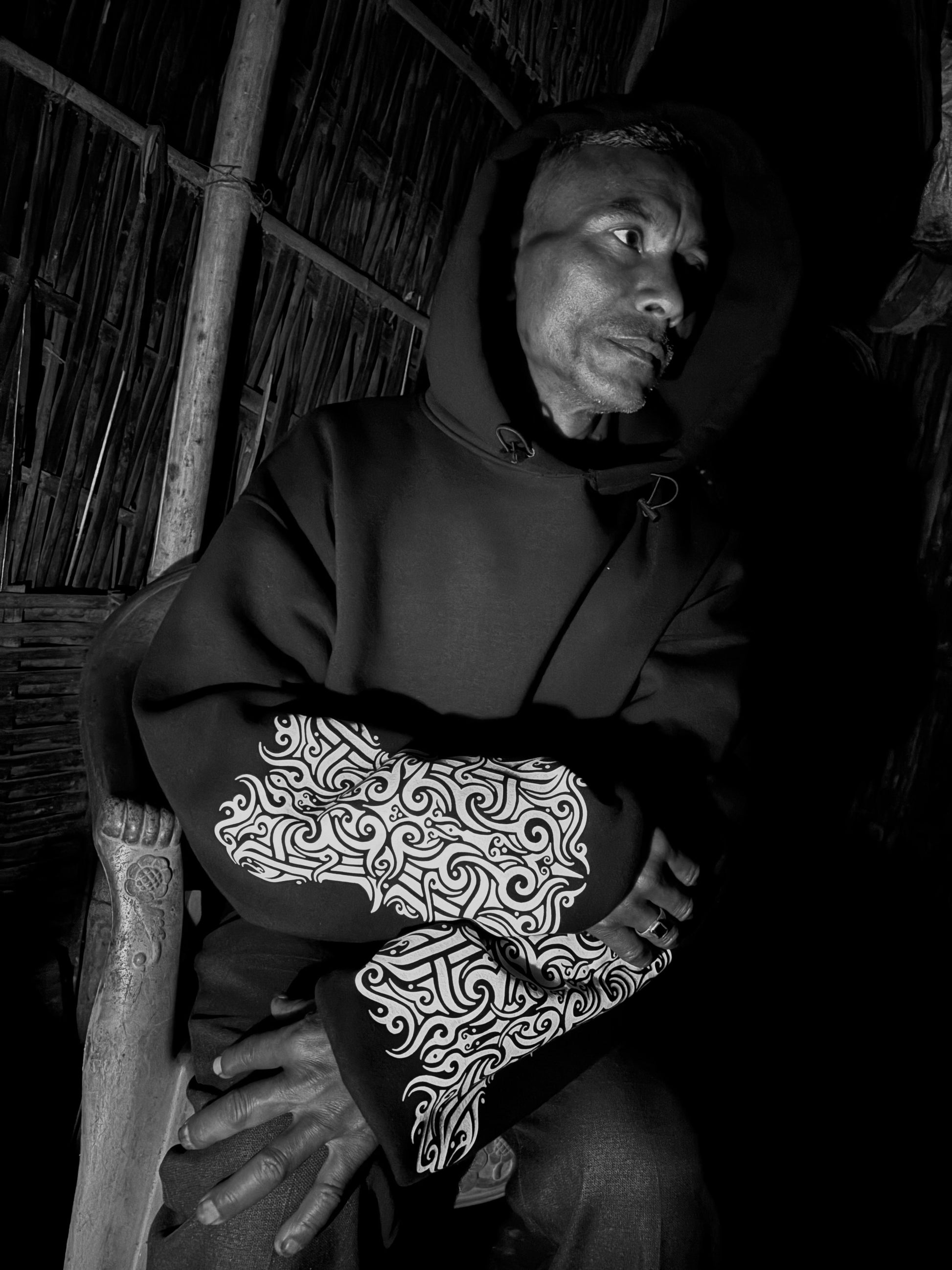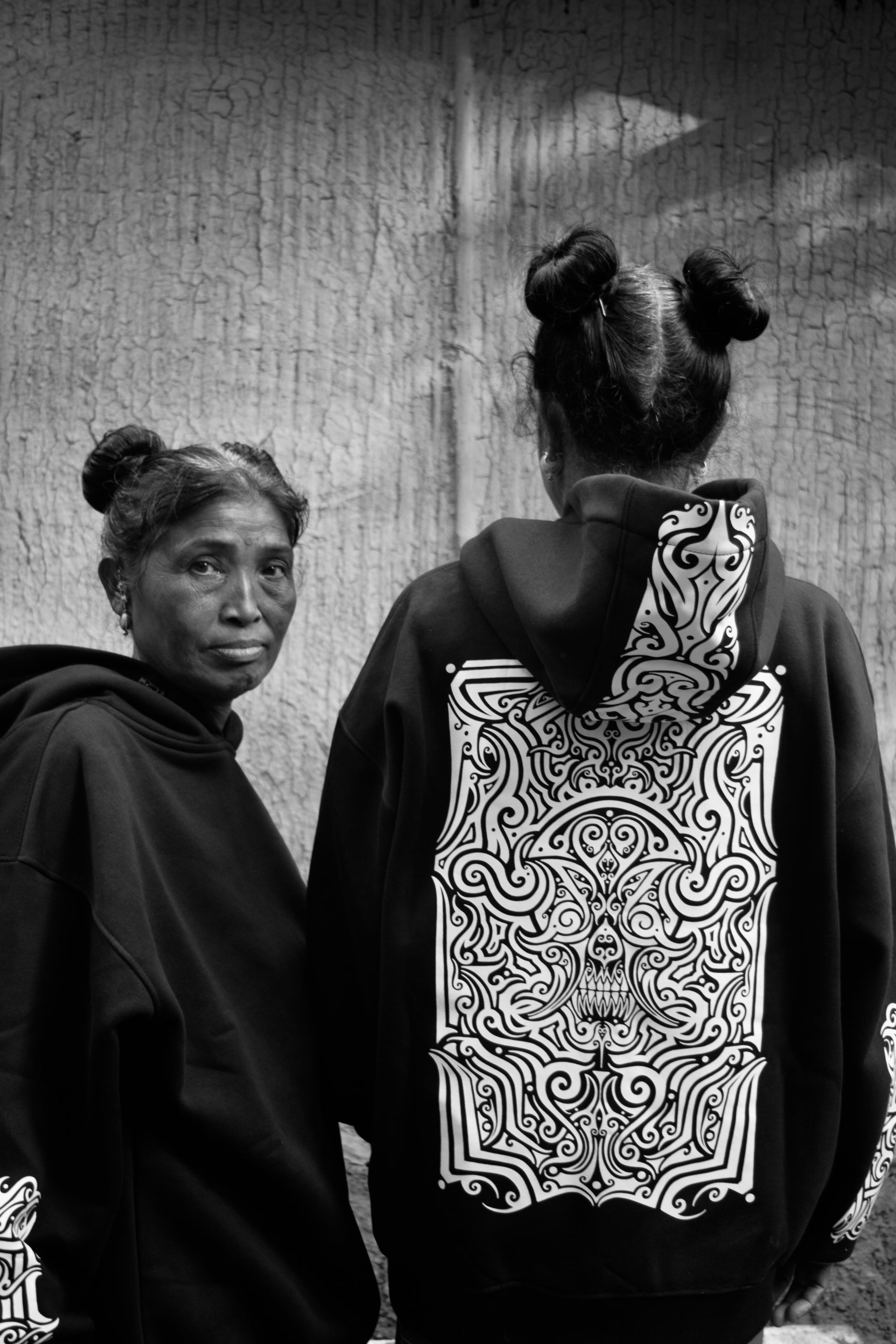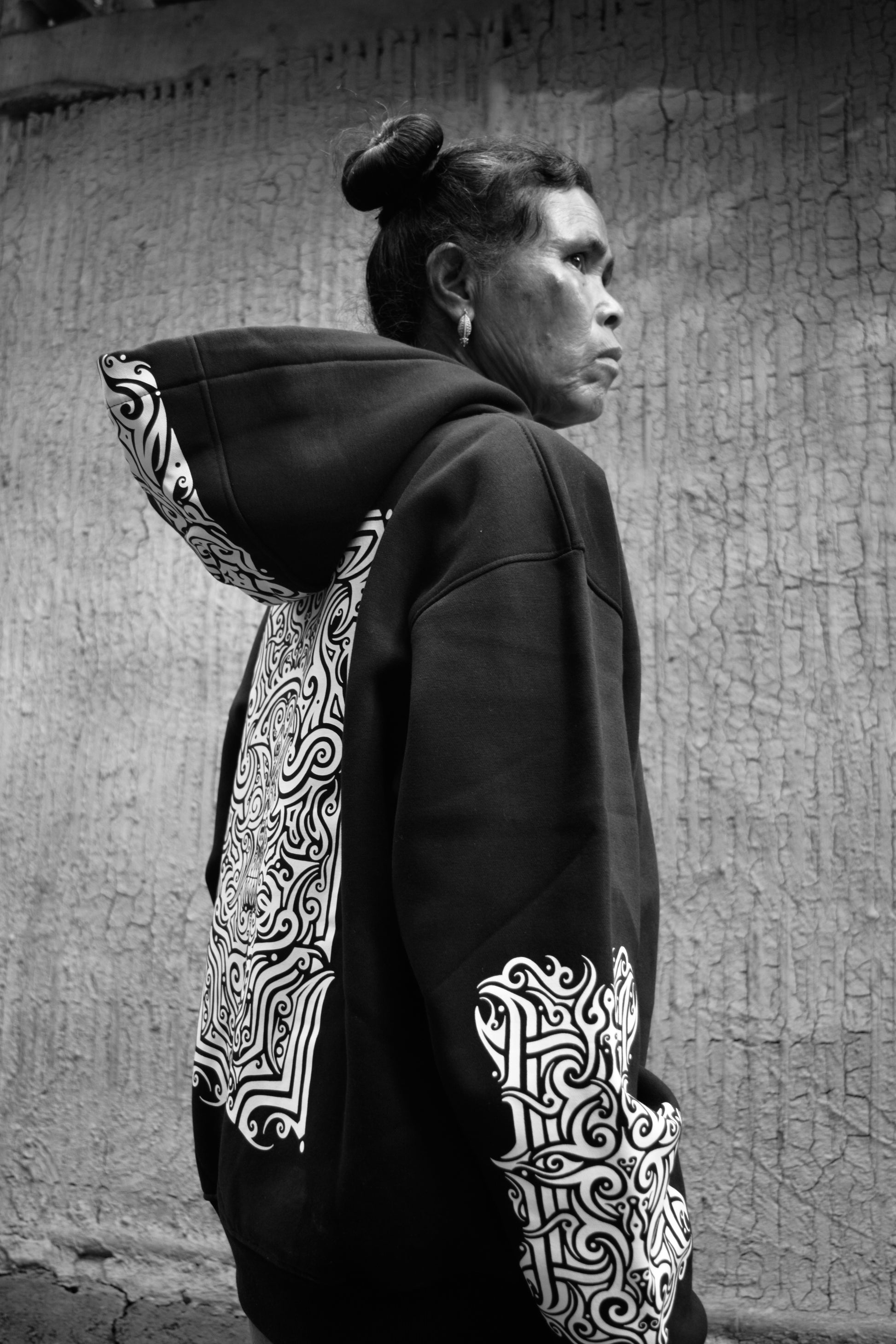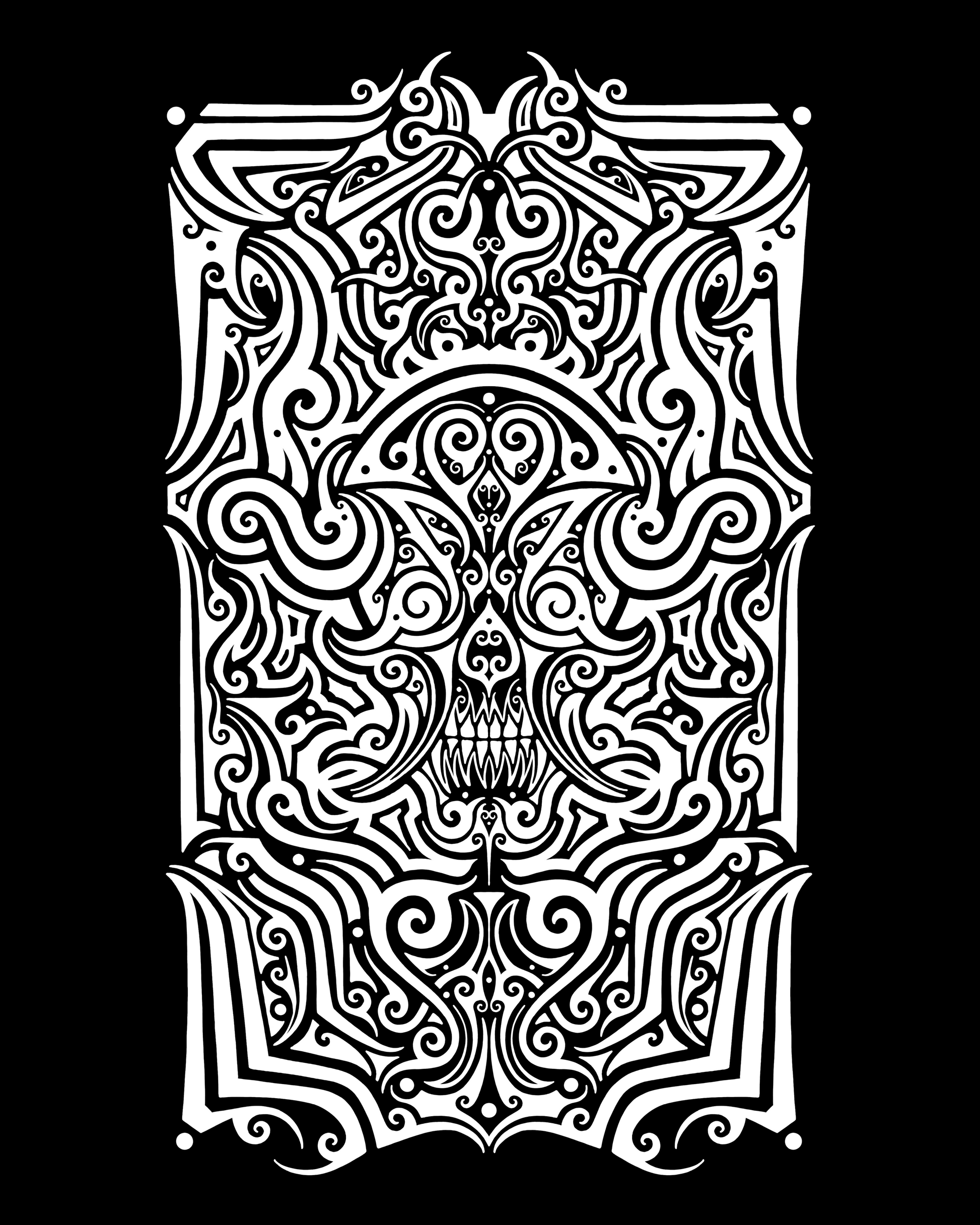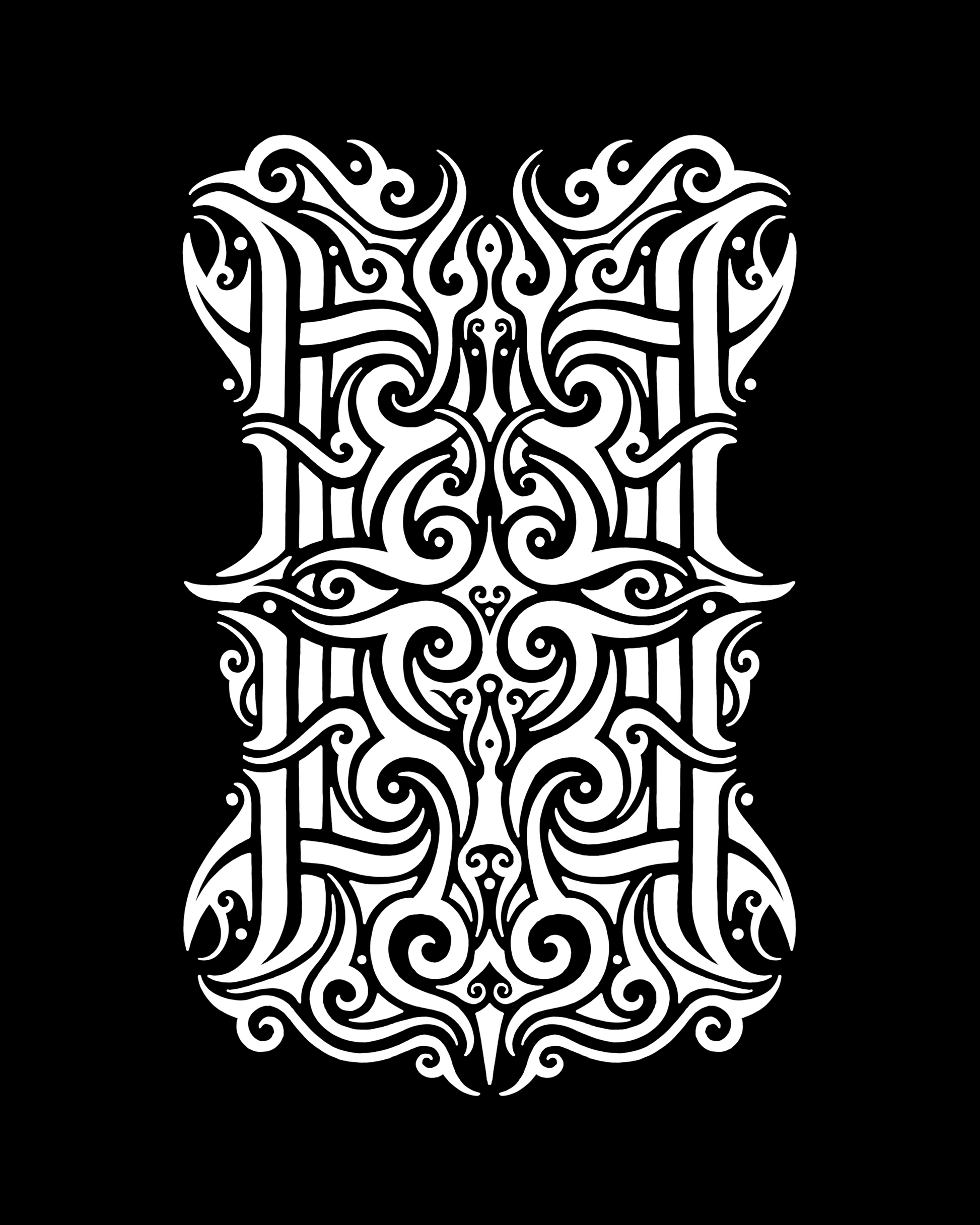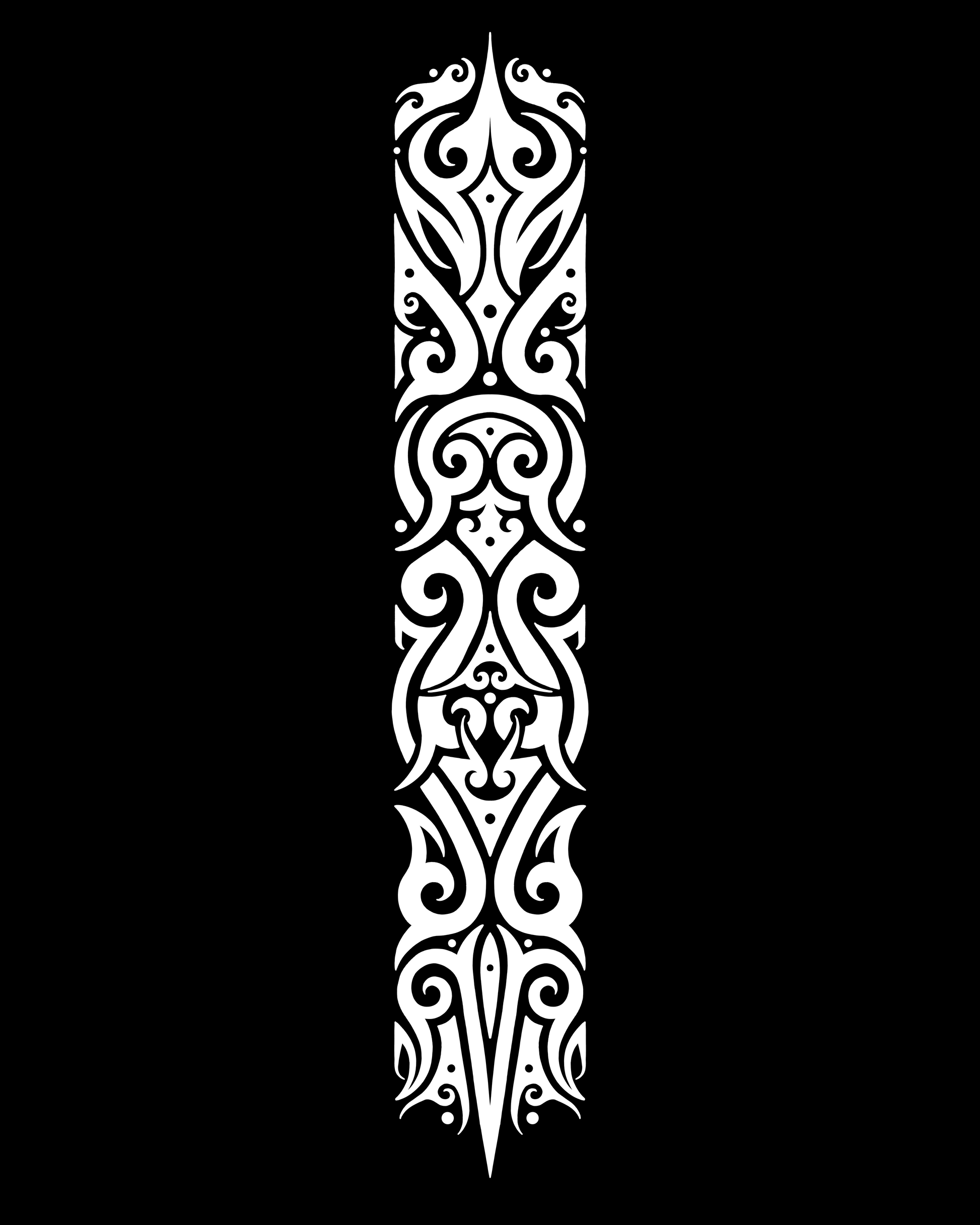puberun blackmarket
whispers of the hunted heads
whispers of the hunted heads
*these prices are for indian clients only. message us to enquire price for your country.
check slides for size chart
Out of stock
Couldn't load pickup availability
contact us for international orders
about the product :
- black hoodie
- 420 gsm, cotton fleece
- oversized fit (please check image slides for size details)
- dtf print on back, sleeves and the hood
- limited edition of 60
about the design :
The primary source of inspiration for the design of this hoodie are the headhunters of Nagaland (North-East India) and Borneo. The primal practice of headhunting and the skillful ornamentation of the collected skulls have inspired me to do this project.
Among the many tribes of Nagaland, the Konyaks are considered the most fierce, mainly because of their headhunting practices in the past. Headhunting was an integral aspect of the Konyak culture. It was considered a rite of passage for young boys transitioning
into adulthood. If successful, the warriors were rewarded with tattoos on the face and chest, as marks displaying their strength in the battlefield. Konyak warriors beheaded their enemies and brought back the severed heads as trophies in specially designed baskets that they carried into battles. The heads were then proudly displayed on the walls and doors of the warriors’ houses. In Konyak culture, the practice of headhunting and tattooing are closely related. For men, each tattoo depicts the number of enemy heads he has hunted. Tattoos in women marked important stages of their lives - marriage, birth of the first child, etc. The Indian government banned headhunting in the 1960s which in turn resulted in the termination of the tattooing practices. Only a handful of elderly Konyak warriors remain today, reciting tales of a moribund culture.
Similar practices of headhunting can also be seen within some tribes in Borneo. The Iban, Murut and Kadazan-Dusun are most popular for their headhunting rituals. Among the Iban, an aspiring groom was required to bring atleast one severed head of the enemy to the family of the girl he wishes to marry. Collecting human heads was considered a sign of masculinity and great prestige among the Iban community. In the Murut tribe, the strategic display of enemy skulls at the entrances of their village was considered necessary to portray the ferociousness of the tribe and protect it from any potential attacks from neighboring enemies. The skulls were skillfully removed from the heads, while keeping the facial features and hair intact. Among the Kadazan-Dusun, beheaded enemy skulls were collected not only as trophies but also for spiritual and traditional medicinal practices. The defeated enemy must be alive during the time of beheading as they believed that a dead heart means a dead (useless) head.
With only a meagre number of these headhunting tribesmen left, their tales and culture will soon be history. ‘Whispers of the hunted heads’ is my humble attempt to pay homage to these ancient tribes. I hope that the people who come across this project acknowledge these mighty warriors and get inspired by the spirit of these headhunters.
